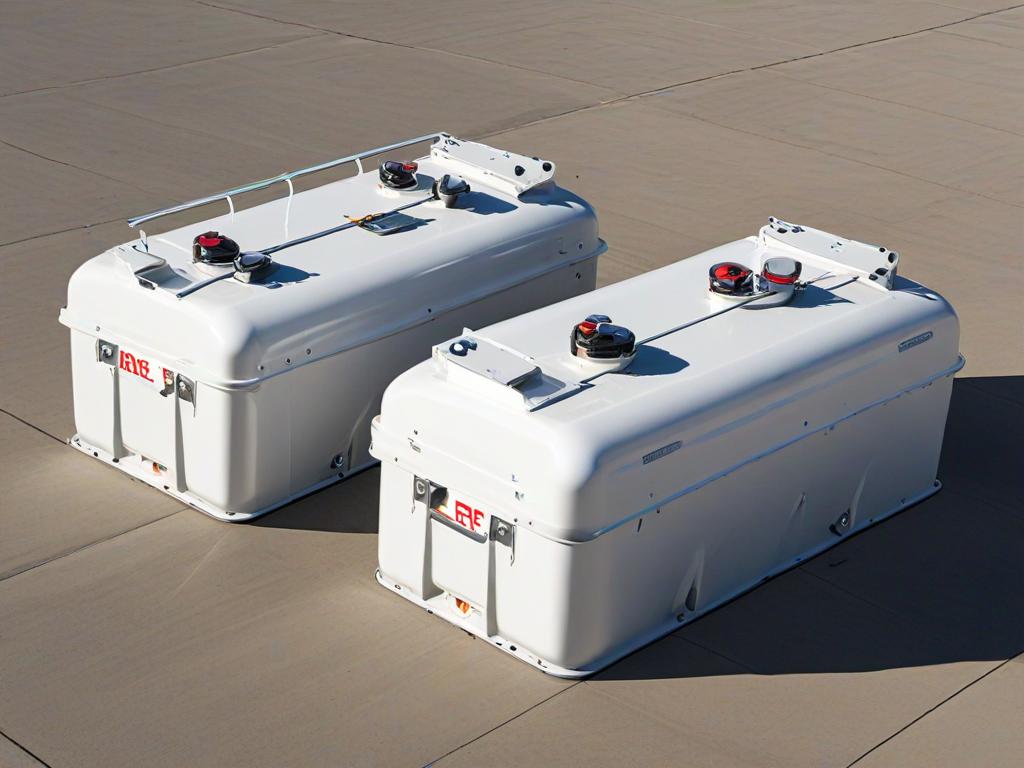
- (03) 5909 8218
- enquiry@fusionweld.com.au
The Role of Self-Bunded Fuel Tanks in Spill Prevention
July 8, 2024

Discover the importance of self-bunded fuel tanks in preventing spills and ensuring the safe storage and transportation of fuels that meet Australian Standards.
Fuel is the lifeblood of outback communities and industries such as mining, aviation, and transportation rely heavily on it and the importance of spill prevention cannot be overstated. Self-bunded fuel tanks have emerged as a crucial solution in this regard, offering a robust and reliable means of storing and transporting fuels like diesel and petrol.
How Self-Bunded Fuel Tanks Prevent Spills
Self-bunded fuel tanks are designed with a double-walled structure, featuring an inner tank and an outer tank with a gap in between. This design allows for any leaks or ruptures to be contained within the outer tank, preventing the spill from spreading and causing environmental damage. The space between the inner and outer walls also provides an additional layer of protection against corrosion and damage, ensuring the tank remains in good condition over its lifespan.
Benefits of Self-Bunded Fuel Tanks
The benefits of self-bunded fuel tanks extend beyond their ability to prevent spills. They offer a range of advantages that make them an attractive option for industries that rely heavily on fuel:
• Cost Savings: Self-bunded fuel tanks eliminate the need for external bunding, which can be significant cost savings. They also reduce the need for specialist civil engineering or building works, making them a more cost-effective option.
• Flexibility: Self-bunded tanks are designed to be easily relocated, making them ideal for industries that require mobile fuel storage solutions.
• Durability: The double-walled structure of self-bunded tanks ensures that they are highly durable and resistant to corrosion and damage.
• Compliance: Self-bunded fuel tanks meet Australian Standards, ensuring compliance with environmental regulations and reducing the risk of fines and reputational damage.
Key Features of Self-Bunded Fuel Tanks
Some of the key features of self-bunded fuel tanks include:
Capacity – Self-bunded fuel tanks are available in a range of capacities, from 1,000 to 110,000 litres, making them suitable for a variety of applications.
Transportability - Self-bunded tanks are designed to be easily transported by road, rail, and sea, making them ideal for industries that require mobile fuel storage solutions.
Safety – Self-bunded fuel tanks are designed with safety in mind, featuring lockable hatches and secure access points to prevent unauthorised access.
Maintenance – Self-bunded fuel tanks are easy to maintain, with simple installation and direct access for maintenance and inspection.
Fusion-Weld Engineering: Your Partner in Safe and Reliable Fuel Storage
Self-bunded fuel tanks play a critical role in preventing spills and ensuring the safe storage and transportation of fuels. Their double-walled structure, flexibility, durability, and compliance with Australian Standards make them an attractive option for industries that rely heavily on fuel.
At Fusion-Weld Engineering, we are committed to providing high-quality pressure equipment solutions that prioritise safety and environmental responsibility. Our self-bunded fuel tanks are designed and fabricated to the highest standards, offering a reliable and secure solution for fuel storage across various industries.
Contact Details
Fusion - Weld Engineering Pty Ltd
ABN 98 068 987619
1865 Frankston Flinders Road,
Hastings, VIC 3915
Ph: (03) 5909 8218
Optimized by NetwizardSEO.com.au
Recent Posts
- Heat Exchanger Maintenance in Melbourne: Minimising Risk in Power Generation Facilities
- Compressed Hydrogen Storage Vessels: Material Selection, Design & Australian Standards
- Welding QA/QC in Oil & Gas Pressure Vessel Fabrication – Ensuring Code Compliance
- AS1210 vs ASME VIII Pressure Vessel Code: Key Differences for Australian Projects
- Mitigating Hydrogen-Induced Cracking in Pressure Vessels: Engineering and Material Strategies
- Storage Tank Solutions Australia: Field-Erected, Prefabricated & Self-Bunded Explained
- Reducing Environmental Risks: Self-Bunded Tanks in Australian Oil & Gas Operations
- Precision in Production: How Pressure Vessels Are Manufactured for Industrial Safety
- Shell & Tube Heat Exchangers: Improve Thermal Control & Energy Recovery in Petrochemical & Pharmaceutical Plants
- In-Service Inspection for Compressed Air Receivers for Power Plant Shutdown Prevention
- Power Plant Pipe Spooling Fabrication – Get Rapid, Code-Compliant Spools Ready for Installation
- Field Erected Tanks: Safe, Reliable On-Site Fuel Storage Solutions in Australia
Posts 2025
- Heat Exchanger Maintenance in Melbourne: Minimising Risk in Power Generation Facilities
- Compressed Hydrogen Storage Vessels: Material Selection, Design & Australian Standards
- View all articles…
Posts 2024
- Large Process Vessels: Optimising the Design for Maximum Efficiency [2025]
- Pressure Equipment Management System Installation: Detect Equipment Faults Early
- View all articles…
Posts 2023
- Pressure Piping System Inspection: A Gift of Safety for the Holidays
- Deaerator Inspections by Fusion-Weld Engineering and How They Reduce System Downtime
- View all articles…
Posts 2022
- How Fusion Weld Keeps Up With AS-NZS ISO 9001:2008 Standard
- Boiler Equipment Safety Inspection During the Summer Season
- View all articles…
Posts 2021
- Avoid These Factors and Practices that Contribute to Sealing Damage in Pressure Vessels
- Do's And Don'ts Of Industrial Boiler Inspection And Maintenance From Fusion-Weld
- View all articles…
Posts 2020
- What are the Risks and Hazards Involved in Pressure Vessel Equipment?
- How to Know if Your Pressure Equipment Needs Repair or Replacement?
- View all articles…
Posts 2019
- Factors that Contribute to Pressure Vessel Failure
- Pressure Vessel Regulations in Australia: What are the Mandatory Requirements?
- View all articles…
Posts 2018
- Pros and Cons of Spherical vs. Cylindrical Pressure Vessels
- What are the Different Hazard Levels in Pressure Vessels?
- View all articles…
Posts 2017
- Transportable Pressure Vessels: The Importance of Inspection and Safety Checks
- Fracture Mechanics and Stress Analysis of Cracks in Pressure Vessels
- View all articles…
Posts 2016
Posts 2015
- What Are Deaerators & Feedwater Vessels?
- Precautions and Safety for Compressed Air Receiver Vessels
- View all articles…
Posts 2014
- Demonstrating In-process Inspection Procedures
- Static Grounding Practices and Standards
- View all articles…